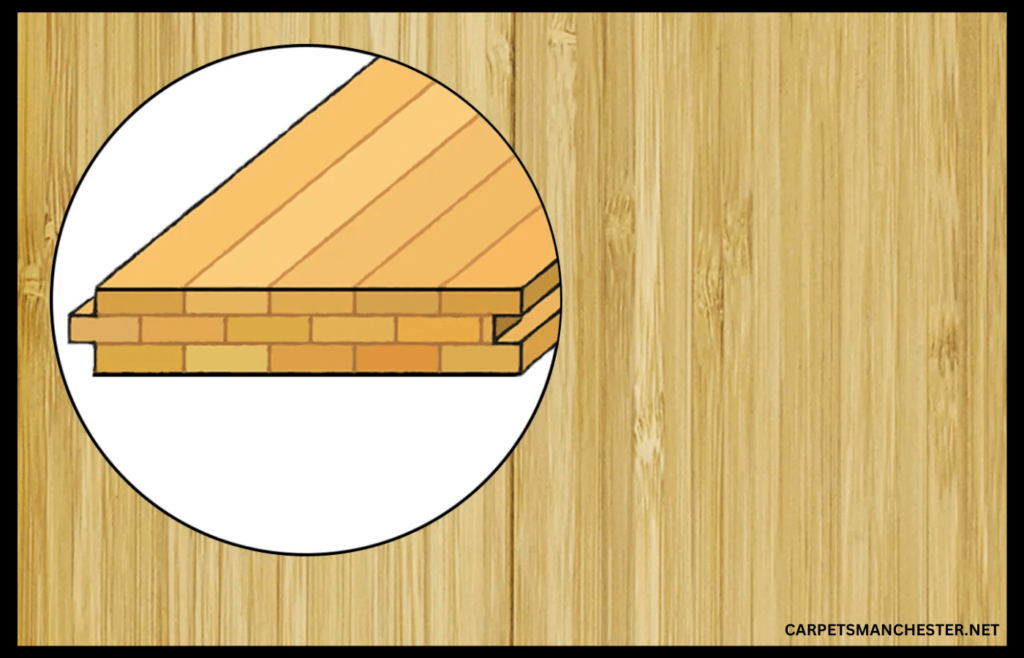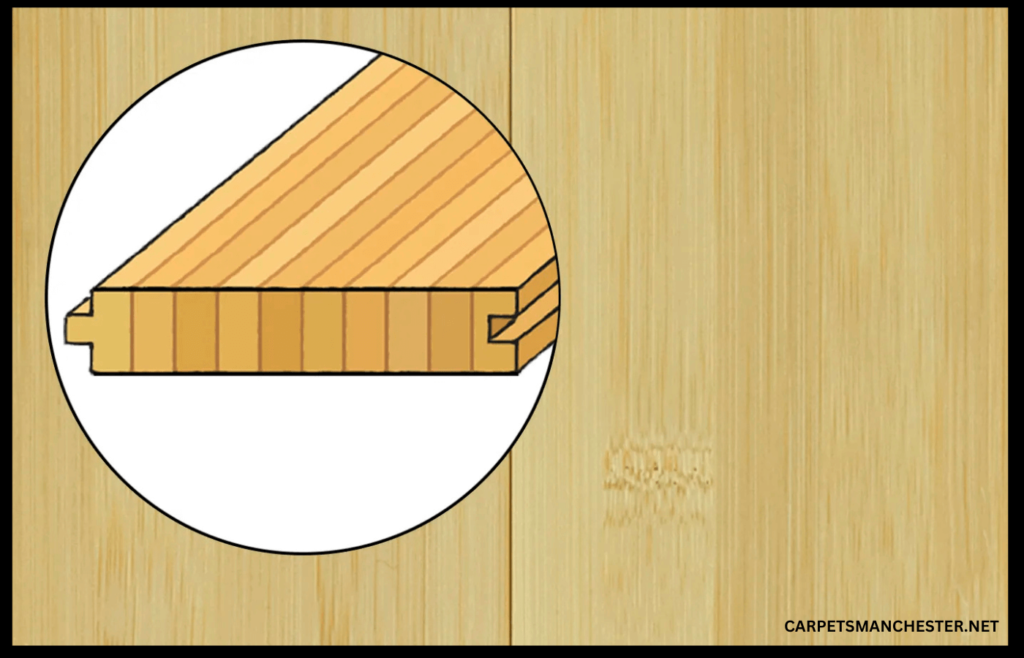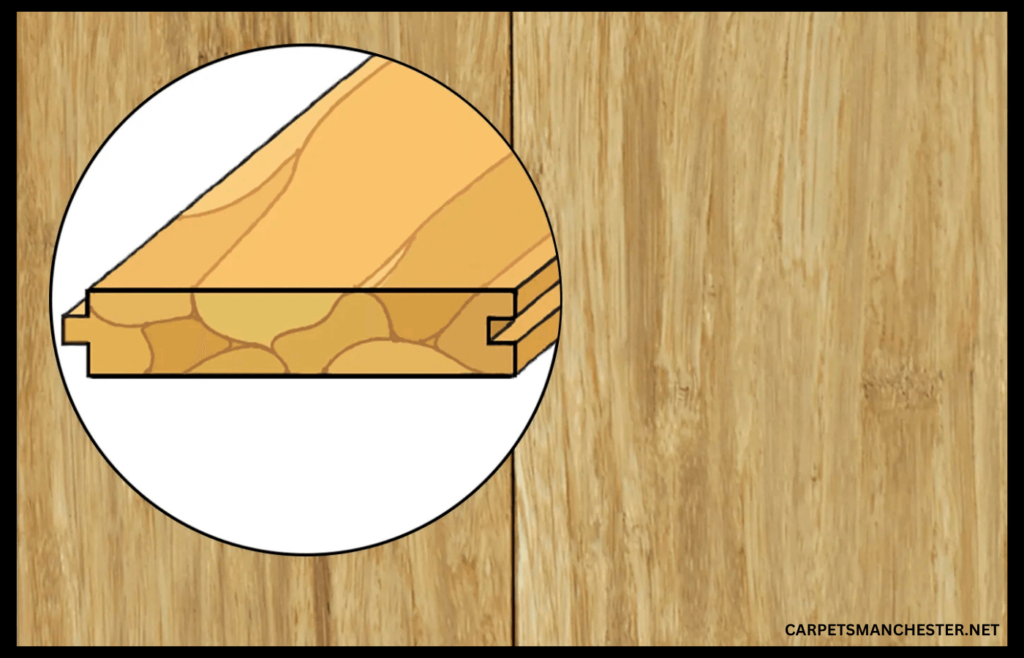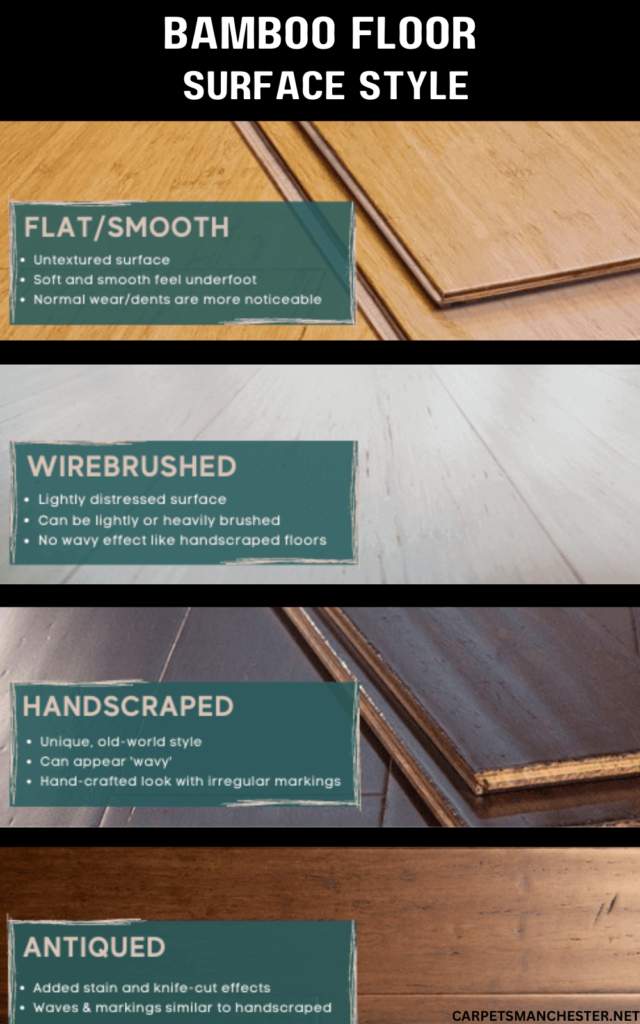
Bamboo Flooring
Bamboo flooring has quickly become a favourite choice for homes and businesses since it made its debut in the mid-90s. But let’s face it, not everything you read about bamboo flooring is reliable—that’s probably because the earlier versions weren’t as durable as the ones you’ll find today.
At carpetsmanchester.net, we’ve been a leading supplier of premium bamboo flooring since 2015, proudly shipping it to Manchester. Along the way, we’ve helped tens of thousands of homeowners, builders, and architects transform their spaces with this incredible material.
Over the years, we’ve gathered a treasure trove of knowledge about bamboo flooring, and we’re thrilled to share it with you in this all-inclusive guide. Whether it’s the different types of bamboo flooring, the latest manufacturing techniques, or its eco-friendly perks, we’ve got it all covered.
Browse our stunningly detailed bamboo flooring guide for inspiration, and if you’re already made up your mind, simply book a meeting here.
Advantages
Bamboo flooring is a fantastic option for anyone looking to spruce up their home. Here’s why:
- Eco-Friendly: Bamboo grows super fast—it’s ready to harvest in just 5–6 years! Compare that to hardwood trees, which can take decades to mature, and it’s clear bamboo is a much greener choice.
- Tough and Long Lasting: If you invest in high-quality bamboo flooring (especially strand-woven varieties), you’ll get a durable floor that can handle the wear and tear of everyday life for years to come.
- Stylish Look: Bamboo has a sleek, modern vibe that works well with a range of interior designs, be it minimalist, contemporary or rustic.
- Affordable: Bamboo flooring tends to cost less than traditional hardwoods, especially compared to exotic wood varieties. A great way to save without compromising on quality!
- Easy to Maintain: Keeping bamboo floors clean is simple. A quick sweep and the occasional damp mop are all you need to keep them looking their best.
If you’re after an eco-conscious, stylish, and budget-friendly flooring option, bamboo could be the perfect fit!
Disadvantages
Bamboo flooring has its perks, but there are a few things to keep in mind before you decide.
- Moisture worries: Bamboo doesn’t handle moisture too well—just like hardwood—so it might not be the best choice for bathrooms or basements.
- Scratches can happen: Even though it’s tough, bamboo can still get scratched, especially in busy areas or if you’ve got playful pets around.
- Hard to refinish: Some types, like strand-woven bamboo, are so hard that they can be tricky to refinish if they get worn down.
- Off-gassing concerns: Cheaper bamboo floors can sometimes use adhesives that release VOCs (volatile organic compounds). To avoid this, always go for a quality brand.
If you’re considering bamboo, just make sure it fits your space and your needs!
Bamboo Flooring Types and Styles
Bamboo flooring comes in many types, each with its own unique features. The way each flooring type is made can affect its look and durability. Understanding how bamboo flooring is manufactured will help you pick the right option for your project with ease.
Types And Functions
- 1. Solid, Classic, Horizontal/Vertical Bamboo
- 2. Engineered Strand Bamboo T&G
- 3. Engineered Strand Bamboo Click Lock
- 4. Rigid Core Strand Bamboo Click Lock (SPC core)
- 5. Solid Strand Bamboo Click Lock (floating)
- 6. Solid Strand Bamboo T&G (tongue and groove)
1. Classic Bamboo - Tongue & Groove


Pros
- 1. Environmentally friendly—like all bamboo flooring options.
- 2. Comes in a variety of colors and surface textures.
- 3. Can be refinished 1 to 3 times to extend its lifespan.
Cons
- 1. Significantly softer than strand-woven bamboo, offering only about one-third of its hardness.
- 2. More prone to dents and scratches compared to strand woven bamboo.
Bottom Line
If you’re looking for stylish, modern flooring, this could be a great option. However, it’s not ideal for high-traffic areas due to its susceptibility to denting and scratching. It offers mid-range hardness, similar to red oak, but falls short of the durability found in strand woven bamboo.
2. Engineered Strand Bamboo - Tongue & Groove

Pros
- 1. The wear layer is up to 3 times tougher than comparable wooden floors.
- 2. Made from rapidly renewable bamboo, which regrows in just 5 years.
- 3. Offers superior dimensional stability.
- 4. ensures excellent indoor air quality.
- 5. an be refinished up to 2 times, provided the wear layer is at least 2mm thick.
- 6. Flexible installation options – it can be nailed, glued, or floated.
Cons
- 1. Floating installations require applying a bead of glue on the inside groove of every plank manually.
- 2. For homes where indoor humidity varies by more than 20% throughout the year, the maximum recommended plank runs are:
- - 25 feet across the width (tangentially).
- - 45 feet along the length (longitudinally).
- 3. There's no need to worry if your HVAC system has built-in humidity control or if you use humidifiers or dehumidifiers to keep humidity levels stable at home.
3. Engineered Strand Bamboo - Click Lock

Pros
- 1. The wear layer is up to three times more durable than similar wood flooring.
- 2. Made from rapidly renewable bamboo that regrows in just 5 years.
- 3. Offers superior dimensional stability.
- 4. ensures excellent indoor air quality.
- 5. an be refinished up to 2 times, provided the wear layer is at least 2mm thick.
- 6. Flexible installation options – it can be nailed, glued, or floated.
Cons
- 1. If your home has very humid summers or exceptionally dry winters, you’ll need to keep the installation’s "run" limits under 25 feet across plank widths, and under 45 feet along the plank lengths.
- 2. For spaces exceeding these limits, bamboo t-moulding can be installed at natural breakpoints like doorways.
- 3. With built-in humidity control (via your HVAC system or using humidifiers/dehumidifiers), fluctuations in humidity won’t be an issue.
4. Rigid Core Strand Bamboo Click Lock (SPC core)

Pros
- 1. The strand bamboo wear layer is up to three times harder than similar flooring options.
- 2. 100% waterproof, making it perfect for kitchens, bathrooms, and basements.
- 3. Features easy click-lock installation for hassle-free setup.
- 4. The high-density limestone core offers excellent stability.
- 5. Often comes with a pre-attached acoustic vapor barrier, providing cushioning, sound insulation, and protection against subfloor moisture.
- 6. Available in a range of surface designs to suit different tastes.
Cons
- 1. This flooring cannot be refinished. However, in a residential setting, you won't need to worry about refinishing for decades, thanks to the toughness of strand-woven bamboo.
5. Solid Strand Bamboo Click Lock (floating)

Pros
- 1. Bamboo is three times harder than oak, making it incredibly resistant to scratches and dents.
- 2. Choose from a range of surface finishes to match your home’s aesthetic.
- 3. Bamboo is a rapidly renewable resource, growing back in just five years.
- 4. Made entirely of solid wood, ensuring long-lasting quality.
- 5. Can be refinished 2–4 times to keep it looking as good as new.
Cons
- 1. Only suitable for indoor spaces with consistently stable humidity levels throughout the year. It has low-to-average dimensional stability, which can cause significant shrinkage if humidity drops below 35%.
- 2. If indoor humidity varies by more than 20% during the year, the maximum recommended run sizes are:
- - 15 ft across the width (tangentially) - 25 ft along the length (longitudinally)
6. Solid Strand Bamboo T&G (tongue and groove)

Pros
- 1. Up to 3 times harder than traditional oak flooring.
- 2. Choose from handscraped, brushed, flat, and other unique finishes.
- 3. Made from rapidly renewable bamboo that regrows in just 5 years.
- 4. Floors meets Floorscore® standards for a healthier home.
- 5. Can be sanded and refinished 2-4 times for extended lifespan.
- 6.Suitable for nailing or gluing onto various subfloor types.
This flooring offers the perfect combination of durability, style, and affordability—ideal for any home, especially with kids or pets. It’s a smarter, cost-effective alternative to traditional hardwood.
Bamboo Grain Types
Bamboo flooring comes in three main types of grain to choose from: horizontal, vertical, and strand-woven. Each option has unique qualities, so picking the right one depends on what suits your home or business best.
1. Horizontal Bamboo Flooring

Horizontal bamboo flooring is made by taking large, dried strips of bamboo, cutting them into smaller pieces, and then gluing them together to form planks. These planks are pressed together using non-toxic adhesives to create the final product.
Because bamboo is naturally light in color, it’s often stained or carbonized to achieve a darker finish. Carbonization softens the bamboo slightly, but it’s a great option if a richer, darker tone is what you’re after.
One of the standout features of horizontal bamboo flooring is that it retains visible bamboo nodes, giving it a natural, authentic look that’s perfect for adding character to your space.
2. Vertical Bamboo

Vertical bamboo is pretty similar to horizontal bamboo in appearance. That’s because they’re made in almost the same way—large bamboo stalks are cut into thin strips.
The difference? Instead of gluing the strips flat in a horizontal direction, they’re glued edge-to-edge vertically. This vertical arrangement also hides those tell-tale bamboo nodes, giving it a cleaner look.
3. Strand Woven Bamboo Flooring

Looking for a sustainable and affordable flooring option? Strand woven bamboo might be just what you need!
This flooring is made by compressing bamboo strands under high heat, creating an incredibly dense and durable material. How tough is it? It actually surpasses most traditional hardwoods in hardness rankings!
Thanks to its strength and long-lasting nature, strand woven bamboo has become one of the most popular flooring choices out there. It’s eco-friendly, budget-friendly, and built to last—what’s not to love?
Bamboo Flooring Surface Styles
Just like hardwood, bamboo flooring comes in a variety of surface styles and textures. There’s something to suit every taste! Here are some of the options you can explore when choosing your bamboo flooring.

